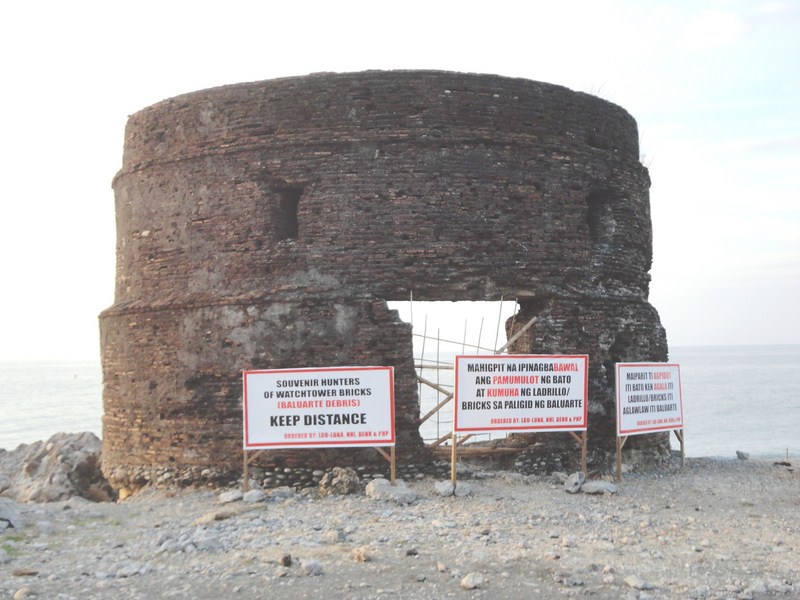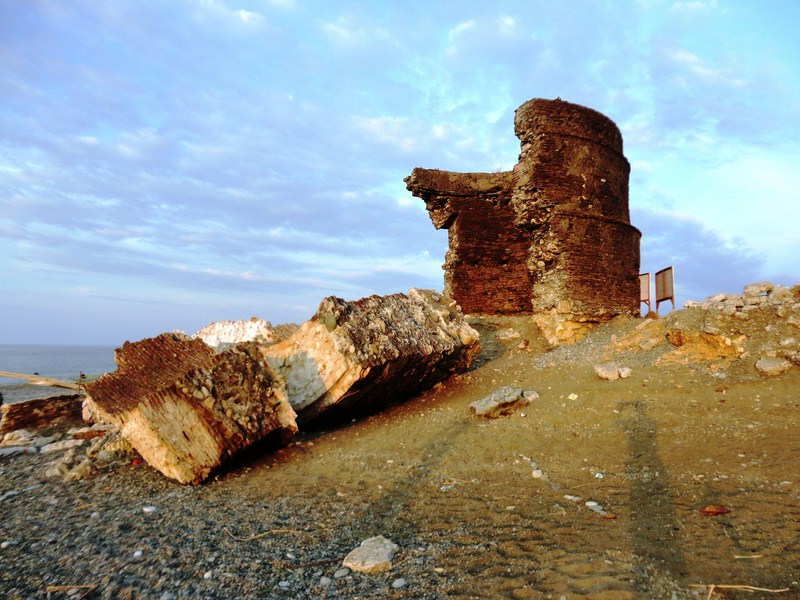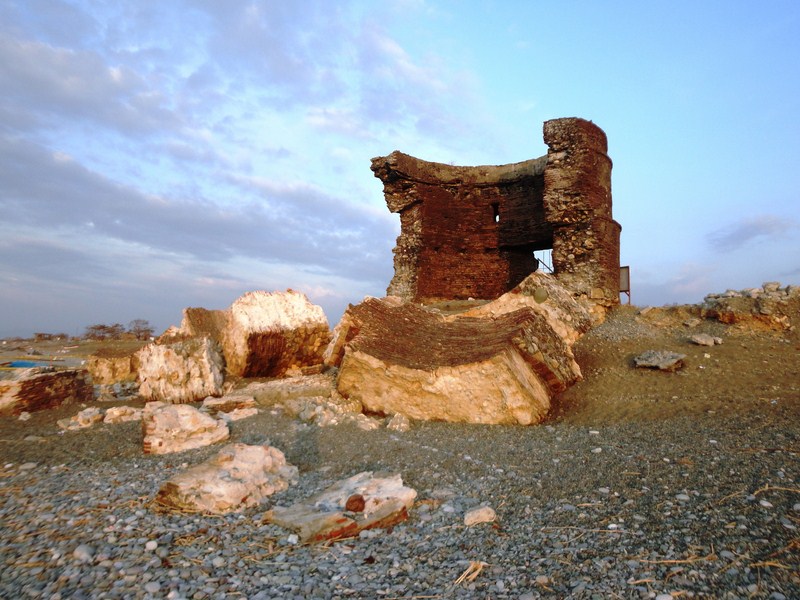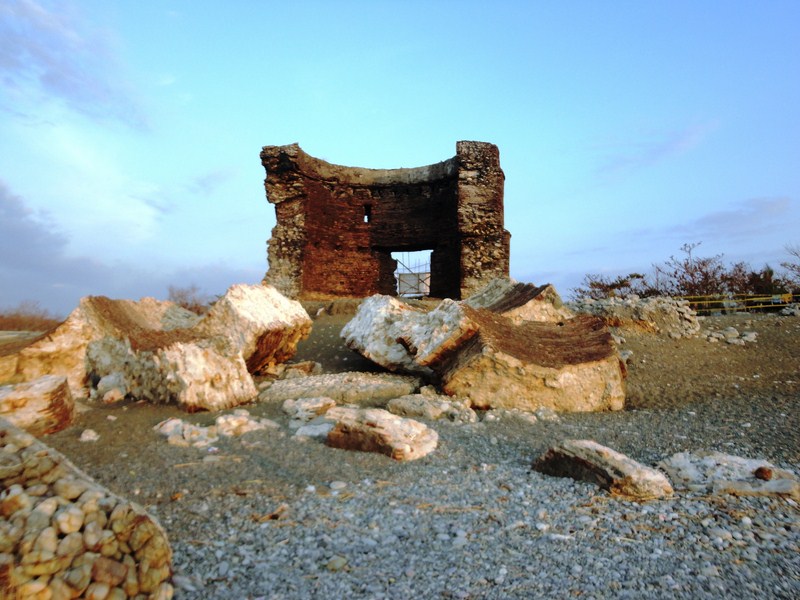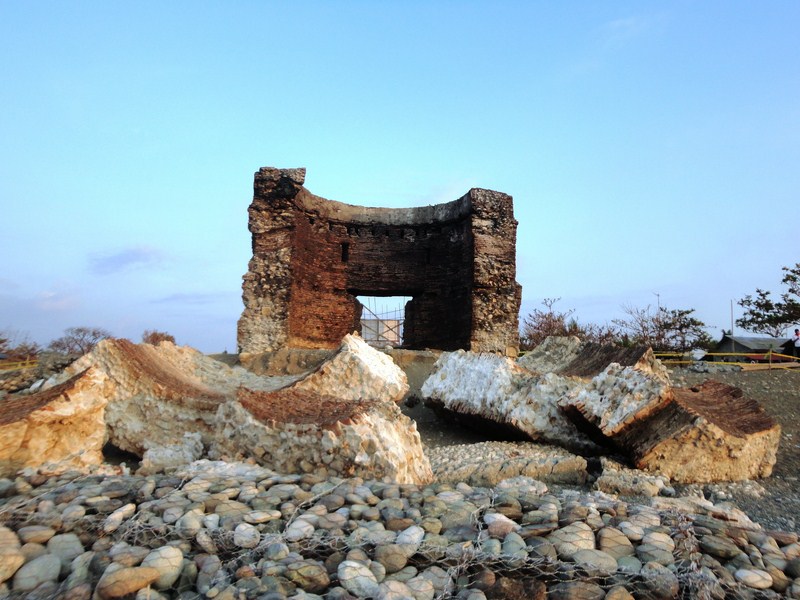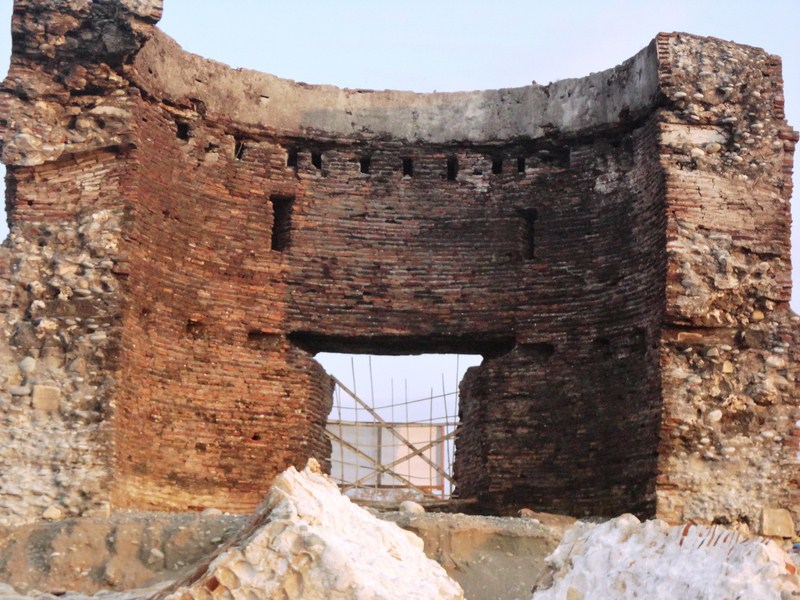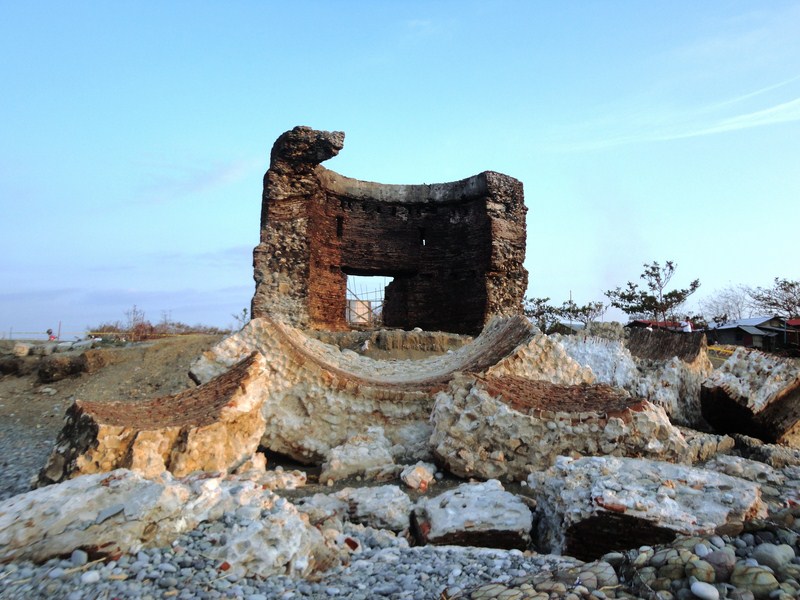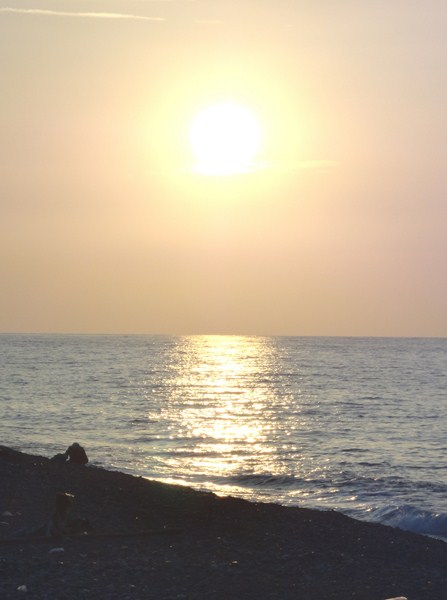After our short stopover at the Luna town proper (where we had a merienda of bibingka and visited the Church of St. Catherine of Alexandria), we proceeded, southwest of the town, to the town’s coastline where we visited the town’s century-old Spanish-era watchtower, locally called Baluarte. During World War II, the tower served as the communication tower post for a temporary airfield for the USAFIPNL forces. In the past, this defense post was in fair condition, circular in shape and made of brick but the sea had already undermined its base causing half of it to break off and lean at a dangerous 20-degree angle toward the sea.
Located about 700 m. northwest of the Municipal Hall, the tower used to stand at a robust 5.6 m. high with an external diameter of 11 m. and an internal diameter of 5.5 m., with 2.5 m. thick walls made up of adobe, coral blocks and layered, stretched bricks fused together with mortar of lime and egg whites. This massive circular tower sat about 34 m. from the shoreline during low tide.
The structure would have collapsed more than 10 years ago but, in 2007, the provincial engineering office propped it up with piles (concrete columns used in building bridges) and covered its perimeter with gabion mattress. The provincial agriculture office also prohibited the picking of stones 50 meters around the Baluarte to check erosion. However, all that were done were “band-aid solutions.”
To really strengthen the foundation of the Baluarte, it should be first declared a National Historical Landmark before funds can be allocated for its construction and preservation. Two years ago, the Luna Municipal Council passed Resolution 68-2013, requesting the National Historical Commission to declare the watchtower as a National Historical Landmark to enable government agencies to fund the preservation project. They also passed Resolution 69-2013, asking the National Museum to also declare it a National Cultural Treasure.
On November 2014, this tower, together with the other watchtowers of the province (Bacnotan, Balaoan and San Juan towns and Carlatan in San Fernando City) were declared as National Cultural Treasures by the National Museum (NM).
However, this tower was further damaged when Typhoon “Lando” (international name “Koppu”) struck northern Luzon on October 20, 2015. The half that was already breaking off toward the sea finally collapsed as the old shoring failed when the entire beach underneath was swept away by big waves and strong winds. Right after the typhoon, the National Museum sent a team for a preliminary ocular inspection and to coordinate with the local government to secure the fallen pieces of the brick structure.
Now that the tower is a declared National Cultural Treasure, it is my hope that funds will finally be made available for its repair and preservation. If nothing is done, another big storm could finally destroy the Baluarte for good as storm surges can reach up to 10 m., towering over the structure that was already weakened, in the past, by the elements.
Old Spanish-era watchtower: Darigayos Point, Brgy. Victoria, Luna, La Union.
How to Get There: Luna is located 267.48 kms. from Manila and 34.8 kms. north of the City of San Fernando. Air conditioned buses from Dominion Bus Lines, Philippine Rabbit, Partas, Fariñas, Maria de Leon, and Viron depart from terminals in Manila that is bound for Ilocos. Destinations can either be La Union, Narvacan, Vigan, Laoag or Abra. Just tell the bus attendant that you are going to Luna.

